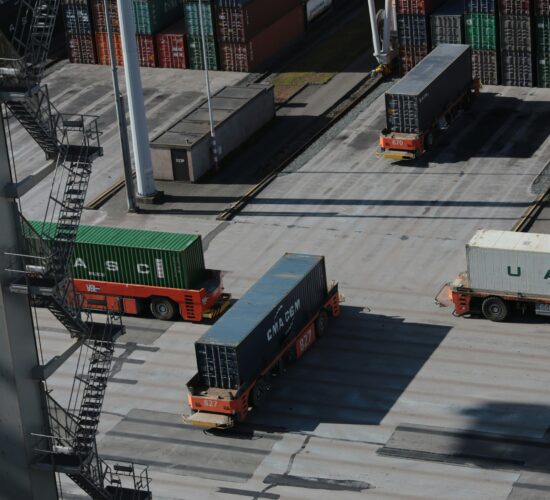The Ultimate Checklist for Ensuring Secure Transport of Goods

Transporting goods safely and efficiently lies at the heart of every successful supply chain. With global trade expanding and consumer expectations rising, companies must go beyond speed and cost efficiency to meet the demands of a changing world. Security during transport has become a top priority. From theft prevention to regulatory compliance, businesses must adopt comprehensive measures to safeguard shipments. A secure transport process not only protects valuable cargo but also strengthens customer trust and ensures smooth operations.
Understanding the Importance of Secure Transport
Every shipment represents a significant investment and responsibility. When goods are in transit, they face multiple risks—cargo theft, tampering, accidents, and even cyberattacks on digital tracking systems. Businesses that ignore these risks put themselves at risk of financial and reputational harm. Security in transport ensures that goods reach their destination intact, on time, and in compliance with trade regulations. This checklist approach helps companies address vulnerabilities while building resilience into their logistics operations.
Pre-Transport Planning
Security begins before the shipment leaves the warehouse. Companies must carefully plan routes, evaluate risks, and establish contingency measures. High-risk regions, traffic bottlenecks, and known theft hotspots should be identified during the planning stage to ensure adequate security measures are implemented. Secure transport requires collaboration between logistics teams, drivers, and security personnel. When risks are addressed early, businesses reduce the chances of encountering disruptions.
Proper Packaging and Seals
Tamper-evident packaging and secure seals form the first line of defense during transport. Strong packaging protects goods against environmental damage, while seals prevent unauthorized access. Companies should implement tracking numbers for seals to ensure accountability throughout the journey. Proper packaging not only protects cargo but also simplifies verification upon arrival.
Access Control and Driver Verification
Unauthorized access often leads to theft or tampering. Companies must establish strict access controls for drivers, vehicles, and personnel involved in handling cargo. Driver verification systems, biometric authentication, and ID checks ensure that only authorized individuals participate in the transport process. Training drivers on safety protocols enhances accountability and strengthens road security.
Real-Time Tracking and Monitoring
Visibility is one of the most critical elements of secure transport. GPS-enabled tracking devices, RFID tags, and IoT-based sensors allow companies to monitor shipments in real time. Alerts for route deviations, unscheduled stops, or delays help logistics managers intervene quickly. This constant visibility deters theft and ensures accountability at every stage. Real-time monitoring also improves communication with customers, who value transparency about shipment status.
Cybersecurity for Digital Systems
Modern transport operations rely heavily on digital tools for route planning, cargo documentation, and shipment monitoring. Unfortunately, this dependence makes them attractive targets for cybercriminals. Strong cybersecurity measures, including encrypted communications, multi-factor authentication, and intrusion detection systems, protect sensitive shipment data. Training staff to identify phishing attempts and unauthorized data requests further strengthens defenses. Cybersecurity ensures that physical and digital operations remain secure and uninterrupted.
Risk Management and Contingency Plans
No transport operation is free from risk, but companies can minimize damage through effective risk management. Backup routes, emergency response protocols, and communication systems enable companies to respond effectively to disruptions. Natural disasters, traffic accidents, or strikes may occur without warning. Contingency plans ensure continuity and reduce losses, protecting both the cargo and the company’s reputation.
Compliance with Legal and Regulatory Standards
Transport security is not just a matter of good practice; it is also a matter of law. Customs regulations, trade agreements, and safety standards govern the movement of goods across borders. Companies must maintain accurate documentation to avoid delays or fines. Digital compliance systems streamline recordkeeping, reduce errors, and improve traceability. Compliance ensures smooth transport while demonstrating professionalism and reliability to partners and clients.
Employee Training and Security Culture
Employees play an essential role in secure transport. From drivers to warehouse staff, every individual must understand their responsibility in protecting cargo. Training programs should cover cargo handling, reporting suspicious activities, and emergency response protocols. A culture of security within the organization ensures that everyone remains vigilant and aware of potential risks. Well-trained employees act as the first line of defense against theft, fraud, or negligence.
Partner and Vendor Accountability
Transport often involves multiple stakeholders, including carriers, third-party logistics providers, and subcontractors. Security weakens if any partner fails to follow proper measures. Companies must set clear expectations through contracts and conduct regular audits of their partners. Collaborative security standards and information sharing strengthen the entire supply chain. Building strong, accountable partnerships ensures that security remains consistent across every handoff.
Leveraging Technology for Predictive Security
Technology offers powerful tools for anticipating and preventing threats. Predictive analytics, artificial intelligence, and machine learning systems can identify unusual patterns and alert companies to potential risks. For example, AI can detect deviations in vehicle behavior that may signal hijacking attempts. Predictive technology enables businesses to take action before risks escalate, resulting in proactive rather than reactive security strategies.
Continuous Monitoring and Auditing
Security does not end when the cargo arrives. Companies must continuously evaluate their systems through audits and monitoring. Regular security reviews help identify gaps and ensure compliance with new regulations. Independent audits offer objective insights into vulnerabilities. Continuous improvement ensures that security systems remain strong and adaptable in a rapidly changing global environment.
Securing the transport of goods requires a multi-layered approach that addresses both physical and digital risks. From pre-transport planning and real-time tracking to cybersecurity and employee training, every measure contributes to a safer, more reliable supply chain. Businesses that implement this checklist not only protect their cargo but also build customer trust, ensure compliance, and maintain long-term competitiveness in a world where speed and reliability matter. Secure transport stands as the foundation of successful logistics operations.